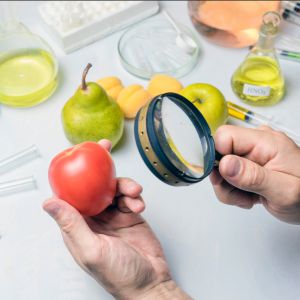
At a National Food Safety Summit in Baltimore in 2014, 216 attendees shared a tainted chicken marsala dish at lunch and became sick. Oh the irony! You can imagine the creative newspaper headlines that followed.
Later during the analysis, the experts were unable to identify with certainty how the meal became tainted with Clostridium perfringens. It highlights the challenges faced during other food-borne illnesses. In this case there was a captive audience who were experts and who knew exactly how the process works and what they would look out for. They were able to move quickly to initiate the process of detection. In most other cases teams are not so lucky.
 Let’s look at the three elements of the detective work that are initiated when an outbreak is suspected:
Let’s look at the three elements of the detective work that are initiated when an outbreak is suspected:
Epidemiology is about the spread of infectious diseases. In an actual outbreak, experts look at the cases being reported, interview those who become sick and analyze the data. Through this tried and tested approach the experts identify when there is a cluster of cases that may be a widespread outbreak. They ask those impacted about the food they have eaten recently and they look at all the data for common links. You can imagine the challenges with this, particularly in trying to get people to remember everything they ate during the previous few weeks. In the case of the Food Safety Summit mentioned above, this part of the process was relatively easy.
The second element of the process is to identify the pathogen. With careful analysis and working closely with the epidemiologists, microbiologists can create and test hypotheses relatively quickly, particularly if there are still samples of the tainted food available. More commonly, as it is most likely the offending food has long since been consumed or thrown away, tests are done on stool samples collected from sick people. Epidemiologists use highly sophisticated tests which can identify strains down to their individual DNA. Not all E. coli is the same!
The last step is to try to trace the product. This can be challenging. For example, at the time of the spinach crisis in 2006, even if you had a sample of the tainted product, a multitude of computerized and paperwork systems and markings on food packaging made traceability backwards and forwards in the supply chain very complicated. And this was assuming you were starting in the right place! In the highly publicized outbreak that began on Memorial Day weekend 2008, the FDA launched a traceability effort believing that particular outbreak was due to tainted tomatoes. Weeks later, after 1500 people became sick, 315 went to hospital and two people died, it was discovered that the source was not tomatoes but peppers. That summer the tomato industry was wiped out, with total losses in the hundreds of millions of dollars.
 These examples illustrate how difficult it can be to pinpoint the source of an outbreak. Even with several key factors in their favor, the experts at that conference in Baltimore were still unable to determine exactly how so many attendees became sick.
These examples illustrate how difficult it can be to pinpoint the source of an outbreak. Even with several key factors in their favor, the experts at that conference in Baltimore were still unable to determine exactly how so many attendees became sick.
In his new book Outbreak; Foodborne Illness and the Struggle for Food Safety, Timothy Lytton describes these challenges in fascinating detail. He quotes statistics around the adoption of the standardized labeling as defined by the Produce Traceability Initiative at less than 40% of all boxes being labeled. This was put down to large initial start-up costs, fear that more data would increase growers’ exposure and liability, and concern that rules were constantly changing and therefore producers would wait for a traceability model to be mandated. In the end, the traceback methods used as part of the tomato / pepper outbreak were held up as an example of traceability working once they were able to start in the right place.
The Food Safety Modernization Act of 2010 included a section on traceability that requires the DHSS and FDA to explore and evaluate methods for improving traceability. While this is a topic for a future rant, I think it is worth noting that this nudge from the government helped drive enhancements in older systems and the evolution of new ideas.
And that, my friends, is one of the reasons we’re doing what we’re doing here at Procurant!
Lorem ipsum dolor sit amet, consectetur adipiscing elit

These Stories on Food Safety
Procurant USA LLC
475 Alberto Way - Suite 230
Los Gatos, CA 95032
1-669-221-1026
info@procurant.com
